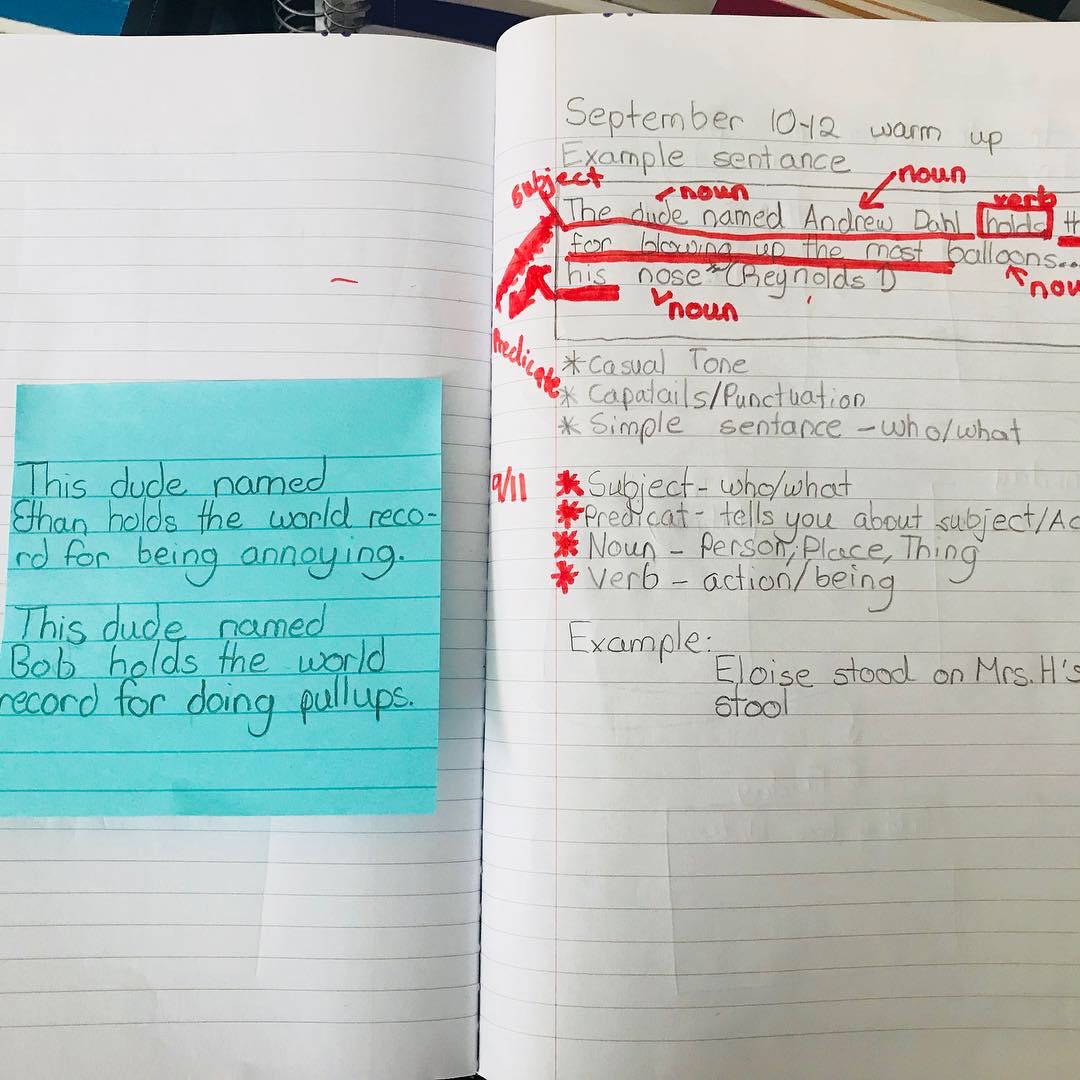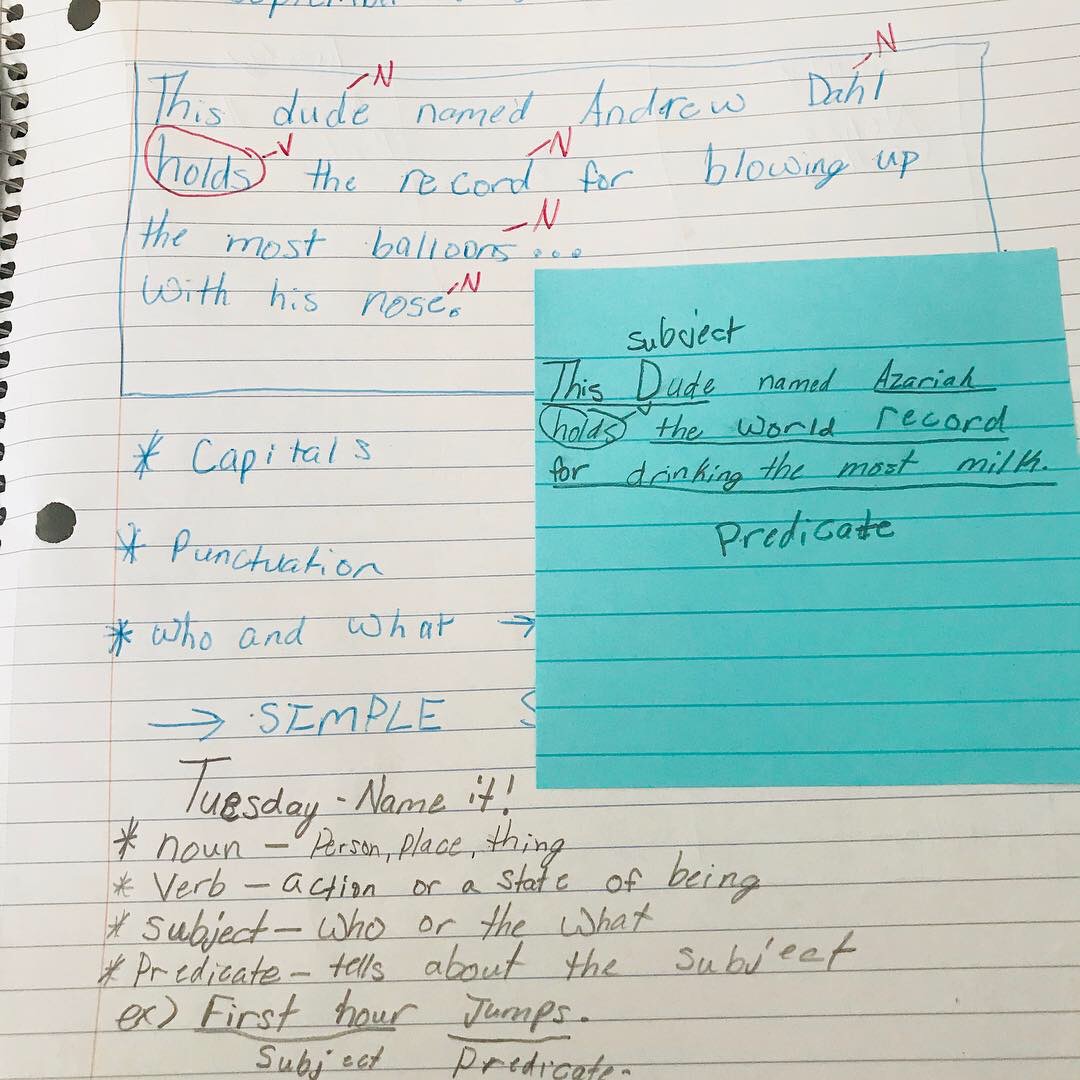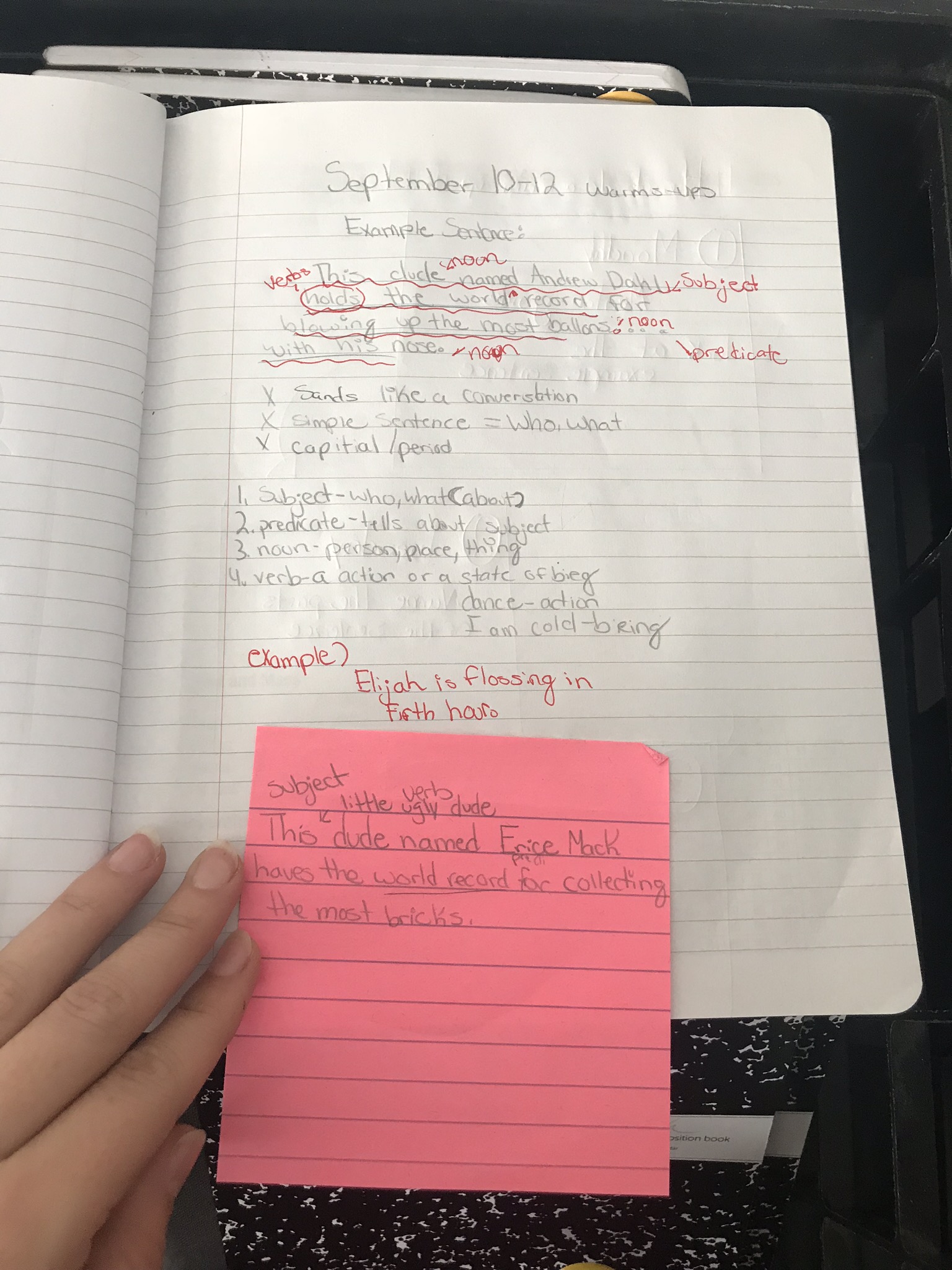Make a Plan for Mentor Text Warm-Ups
Writing Like Authors…And Also Not Feeling Like a Fool Teaching Grammar
After reading Linda Reif’s The Quickwrite Handbook: 100 Mentor Texts to Jumpstart Your Students’ Thinking and Writing this summer, I knew I wanted to incorporate more mentor text work into my classroom this year. This was my ONE thing that I wanted to add that would change up a major system as to how I taught students writing. I also read other texts over the summer that supporting this mindset. It was clear to me: I want my students to call themselves authors.
Mentor Text Teacher Books
Teacher Texts:
The Quickwrite Handbook: 100 Mentor Texts to Jumpstart Your Students' Thinking and Writing by Linda Reif (2018)
The Write Thing: Kwame Alexander Engages Students in Writing Workshop (And You Can Too!) by Kwame Alexander (2018)
180 DAYS: Two Teachers and the Quest to Engage and Empower Adolescents by Kelly Gallagher and Penny Kittle (2018)
In the Best Interest of Students: Staying True to What Works in the ELA Classroom by Kelly Gallagher (2015)
Writing with Mentors: How to Reach Every Writer in the Room Using Current, Engaging Mentor Texts by Allison Marchetti and Rebekah O’Dell (2015)
Write Like This: Teaching Real-World Writing Through Modeling and Mentor Texts by Kelly Gallagher (2011)
The other texts on my desk are from this summer too. They are YA books that I wanted to read to start finding those sentences, paragraphs, and pages that I can use for mentor texts.
The Setup
First, I moved reading workshop to the last part of class. Then, I setup my warm-ups so they weren’t broken down by a daily theme, but instead used the same theme of one piece of mentor text each week. I will provide follow insights on each mentor text chosen and the entire guide by the end of the year. For the first week, I chose Ghost by Jason Reynolds. Each day is designed to have a focus. I was inspired by the literacy coach’s blog, Buzzing with Mrs. B.
Mondays: Notice the writing.
Tuesdays: Name the writing.
Wednesdays: Write like the author.
Note: I go to library on Thursday and on Friday, we Friday Free Write. Therefore, you only see a 3-day sequence for warm-ups for my given week. You could stretch this out to include more teacher modeling or more individual student practice and sharing if needed. Here is the past week broken down by the day and the step.
Monday
Students are still establishing routines. I review expectations and have students get into the habit of grabbing materials before class.
Book Talk
On Mondays, I show students where I got the mentor sentence. I got this week’s sentence from Ghost by Jason Reynolds. I had 35 copies of Ghost, and by the end of the day I had only 2 left.
This day also included HOW we notice writing as an anchor chart that will stay up in my class. My goal is to have this anchor chart break down noticings by the six-traits of writing.
Tuesday
Today is name it day! This is one of the first times that teaching grammar felt authentic. I played a subject-predicate Flocabulary video, and then we labeled the sentence. We then created a class sentence together with the same setup as Reynolds’ sentence and labeled that sentence together.
My Board
For students absent, I keep a running list of the work we do with the mentor sentence every day. My board is pictured here.
Wednesday
Write like an author day! I repeated the phrase, “Get ready to write like Jason” in order to get them excited about imitating authors’ work.
Teacher Models
I first showed my two examples. I also provided a sentence frame for those getting ready to practice.
Author Share
Students got up and shared with each other. They also identified and reinforced the grammar component of this week. When we all went back to seats, we labeled our sentences together.
I then asked students to share out their “Write Like Jason” sentences.
Students Examples
Also, I wanted to point out that student work is only on a single page of a notebook. This makes grading much easier and it goes much faster for me.
Grammar Plan for the Year
Marking Period 1: First Six Weeks
Implementation: One sentence only
Week 2: Simple sentences, subjects/predicates (NOUNS, VERBS, ADJECTIVES, PRONOUNS)
Week 3: NWEA Testing
Week 4: Action verbs (NOUNS, VERBS, ADJECTIVES, PRONOUNS)
Week 5: Helping Verbs (NOUNS, VERBS, ADJECTIVES, PRONOUNS)
Week 6: Linking Verbs (NOUNS, VERBS, ADJECTIVES, PRONOUNS)
Marking Period 2: Second Six Weeks
Implementation: Two to three sentences -start moving to gluing mentors
Week 1: Compound sentences (NOUNS, VERBS, ADJECTIVES, PRONOUNS)
Week 2: Past tense
Week 3: Present tense
Week 4: Future tense
Week 5: Inserting adjectives
Week 6: Capitalizing and formatting titles
Marking Period 3: Third Six Weeks
Implementation: Two to three sentences-glue mentors
Week 1:Pronouns
Week 2:FANBOYS Conjunctions Week 1
Week 3:FANBOYS Conjunctions Week 2
Week 4:Quotation Marks
Week 5:Inserting Adverbs
Week 6:A vs. An
Marking Period 4: Fourth Six Weeks
Implementation: Quickwrites
Week 1:Its vs. It’s
Week 2:There, Their, They’re
Week 3:I and Me
Week 4:Because vs. Cause
Week 5:Than vs. Then
Week 6:Affect vs. Effect
Marking Period 5: Fifth Six Weeks
Implementation: Quickwrites
Week 1:Commas with an introductory clause
Week 2:Commas in a series
Week 3:Commas in dates
Week 4: THAMOS Conjunctions Week 1
Week 5: THAMOS Conjunctions Week 2
Week 6: SWABIS Conjunctions Week 1
Marking Period 6: Last Six Weeks
Implementation: Quickwrites
Week 1: SWABIS Conjunctions Week 2
Week 2:Complex Sentences
Week 3: Semicolons
Week 4:
Week 5:
Week 6:
I left Marking Period 6 so open because inevitably there will be weeks that get away from us. Testing will happen. Snow days will happen. This list is merely a loose plan of where I hope to head by June 2019.














